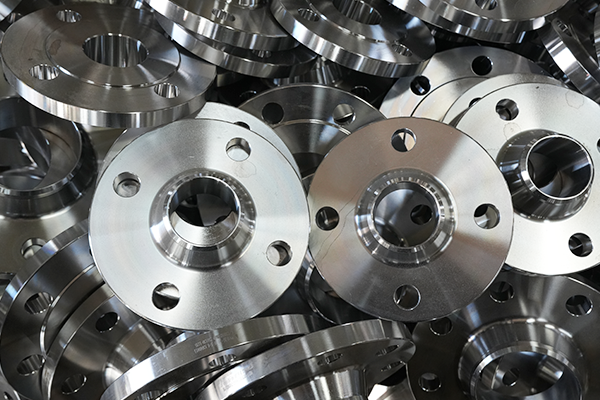NewsDetails
Best Flange Materials for Extreme Temperature Applications
author:Zhantong time:2025-10-30 17:06:32 Click:158
In modern industrial systems, flanges act as the vital connecting points that hold pipelines together under pressure and temperature variations. When a plant operates in extreme temperature environments—from subzero cryogenic facilities to ultra-hot steam lines—choosing the proper flange material becomes crucial for ensuring safety, reliability, and long-term durability.
A specialized China flange manufacturer with bulk production expertise understands that each application demands a balance of mechanical strength, corrosion resistance, and thermal stability. This article provides a comprehensive guide on selecting the most appropriate flange materials for both cryogenic and high-temperature service conditions.
1. Why Temperature Compatibility Matters
Temperature extremes can significantly change how metals behave. At high heat, metals soften, expand, and can suffer from oxidation or creep deformation. At cryogenic levels (below –150°C), the same metals may become brittle and lose ductility.
Flanges must therefore maintain:
·Strength and elasticity across broad temperature ranges
·A stable sealing surface even during expansion or contraction
·Resistance to cracking, warping, or oxidation
Selecting a material suited for your temperature range ensures consistent sealing performance, prevents joint failure, and prolongs system life.
2. Key Factors in Material Selection
When specifying a flange for temperature extremes, engineers must consider more than just pressure ratings. Critical factors include:
·Operating temperature range and fluctuation cycles
·Exposure to corrosive or reactive substances
·Thermal expansion match between flange and pipe
·Mechanical load and vibration resistance
·Ease of fabrication and weldability
Flange materials that can maintain integrity through rapid heating and cooling cycles provide both safety and operational efficiency.
3. Flange Materials for Cryogenic Applications
Cryogenic industries such as LNG production, liquid nitrogen storage, and aerospace fueling require materials that remain tough and ductile under ultra-low temperatures.
3.1 Austenitic Stainless Steels (304L, 316L, 321)
These steels maintain strength and ductility at subzero temperatures while offering good corrosion resistance. The low carbon variants (L grades) are ideal for welded systems because they minimize carbide precipitation.
3.2 Nickel-Based Alloys (Inconel, Monel, Hastelloy)
Nickel alloys are widely used for cryogenic systems due to their superior resistance to brittleness and oxidation. Inconel 625 and Monel 400 provide excellent impact toughness even at –196°C.
3.3 Aluminum and Copper Alloys
For lighter systems, aluminum alloys offer low density and excellent ductility at low temperatures, while copper-nickel alloys combine good thermal conductivity with corrosion resistance.
A China flange supplier producing cryogenic-grade materials ensures every batch passes impact and low-temperature testing under ASTM and ASME standards.
4. Flange Materials for High-Temperature Environments
In high-heat applications like refineries, power generation, and petrochemical plants, material stability at elevated temperatures is critical to avoid deformation, creep, or corrosion.
4.1 Carbon Steels (A105, A350 LF2)
These are widely used for moderate-temperature operations. They are cost-effective and durable but require coatings or plating when exposed to oxidation or high heat for long periods.
4.2 Chromium-Molybdenum Alloy Steels (A182 F11, F22, F91)
Alloy steels containing chromium and molybdenum resist oxidation, scaling, and creep, making them suitable for superheated steam lines and furnace piping.
4.3 Heat-Resistant Stainless Steels (304H, 321H, 347H)
The high-carbon variants of stainless steel retain tensile strength and creep resistance at temperatures above 550°C. They are frequently used in boiler and turbine systems.
4.4 Duplex and Super Duplex Grades
For high-pressure, high-temperature, or corrosive environments, duplex stainless steel provides a combination of toughness, corrosion resistance, and structural integrity.
A China flange manufacturer offering bulk production ensures uniform metallurgical structure and consistent heat treatment for high-temperature service materials.
5. Testing and Quality Control Standards
Flange materials intended for extreme temperature service must undergo comprehensive verification before shipment. Common quality assurance processes include:
·Chemical composition analysis using spectrometry
·Mechanical property testing (tensile, hardness, impact)
·Nondestructive examination (NDT) for internal defects
·Cryogenic impact and creep testing for service validation
Certified flange manufacturers conduct each inspection step under international standards such as ASME, ASTM, and EN to guarantee consistent performance.
6. Protective Coatings and Finishing Treatments
Surface finishing plays a key role in prolonging flange life under severe thermal and chemical stress. Typical treatments include:
·Hot-dip galvanizing to resist oxidation
·PTFE or epoxy coatings for corrosion protection
·Electropolishing to improve cleanliness and reduce contamination
·Aluminized or ceramic coatings for ultra-high-temperature resistance
Proper coating selection further enhances the mechanical and sealing integrity of flanges operating in demanding temperature cycles.
7. Sustainable Manufacturing and International Compliance
Modern China flange manufacturers increasingly incorporate sustainable processes, including energy-efficient furnaces, recyclable alloys, and minimal waste systems.
All flanges are produced under quality frameworks like ISO 9001, PED 2014/68/EU, and API 6A, ensuring compliance with both domestic and international requirements. Manufacturers providing bulk supply documentation demonstrate their production capacity and traceability—a key trust factor in global projects.
Conclusion
Selecting the correct flange material is essential for maintaining structural reliability and safety under cryogenic or high-temperature service. Each metal or alloy responds differently to thermal stress, so material choice should align with both environmental and mechanical demands.
Working with an experienced China flange manufacturer that offers bulk production and material certification guarantees consistent quality, cost efficiency, and compliance with international standards. With the right material selection and rigorous testing, flanges can maintain performance and stability even under the harshest thermal extremes—ensuring safety and efficiency across global energy systems.
References
GB/T 7714:Xu K, Rana M D. Pressure Temperature Ratings of Aluminum Alloy Flanges[C]//Pressure Vessels and Piping Conference. American Society of Mechanical Engineers, 2018, 51593: V01BT01A009.
MLA:Xu, Kang, and Mahendra D. Rana. "Pressure Temperature Ratings of Aluminum Alloy Flanges." Pressure Vessels and Piping Conference. Vol. 51593. American Society of Mechanical Engineers, 2018.
APA:Xu, K., & Rana, M. D. (2018, July). Pressure Temperature Ratings of Aluminum Alloy Flanges. In Pressure Vessels and Piping Conference (Vol. 51593, p. V01BT01A009). American Society of Mechanical Engineers.
 Recommended Products
Recommended Products
 Contact us
Contact us
—— Contact:Manager
—— Tel:+86 15231788966
—— Email:info@zhantongpipe.com
—— Url:https://www.zhantongpipe.com
—— Address:Mengcun Hui Autonomous County, Cangzhou City, Hebei Province









